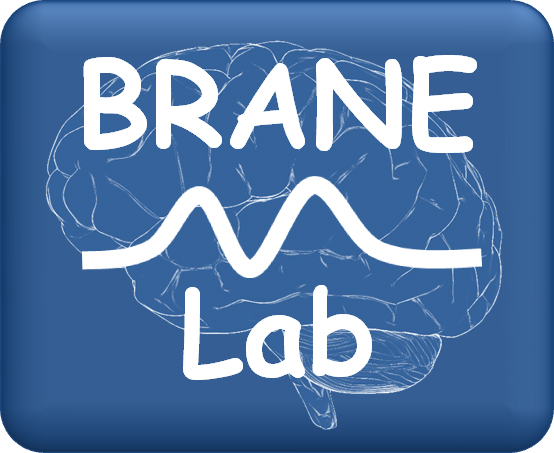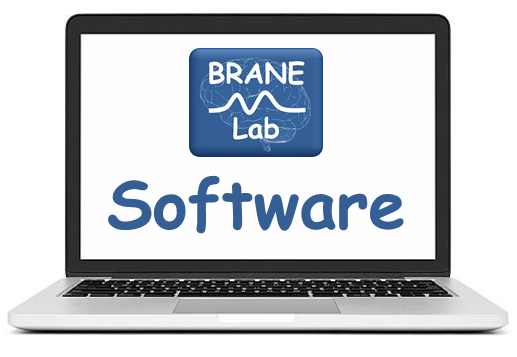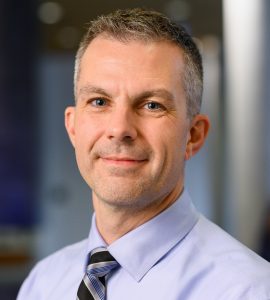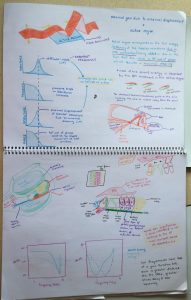Associate Professor
Contact
Phone: (604) 827-4853 (not currently available due to COVID, please contact via email)
E-mail: aherdman@audiospeech.ubc.ca
Dr. Tony Herdman is an Associate Professor in the School of Audiology and Speech Sciences at the University of British Columbia. His teaching includes graduate training of students in audiology and speech sciences with particular focus on advanced hearing sciences and electrophysiology. Dr. Herdman’s research program focuses on understanding the brain dynamics that underlie psychological phenomena involved in auditory and visual perceptions, audiovisual integration, attention, and language. He uses behavioural and electrophysiological (EEG & MEG) measures to study fundamental principles of these systems and how they develop. Another major research area is on advancing and validating neuroimaging methods for EEG and MEG. Dr. Herdman is particularly fascinated by how a human brain functions and communicates across multiple dimensions (space, time, and frequency) and how such communication is altered by experience as a brain develops its abundant abilities.
December 15, 2020
-
Herdman, A.T. (in press) SimMEEG software for simulating event-related MEG and EEG data with underlying functional connectivity. Journal of Neuroscience Methods
- See https://audiospeech.ubc.ca/research/brane/brane-lab-software/ for more information
- SimMEEG software can be downloaded from GitHub: https://github.com/docath/BRANELab/tree/SimMEEG
- “Anatomy” files can be downloaded from one-drive: https://1drv.ms/u/s!Avt7ZLBv1uQUgmIIdGcvkpiuhohb?e=S0kX67
August 6, 2020
-
SimHERA software (includes sABR) is now available! Click HERE
April 15, 2020
- Updates to the simulated ABR software (sABR v10.0). Click on sABR icon above for more details.
March 24, 2019
- Cognitive Neuroscience 2019 Conference poster (CNS_2019_Herdman_poster.pdf)
April 12, 2018:
- Created a Hearing Simulator that will simulate a hearing experience from online recordings or digital sound files (supported formats are .wav, .m4a, and .mp4). Click HERE to go to webpage for FREE software download.
Feb 24, 2018
- Please cite: Herdman, A.T. (2021) SimMEEG software for simulating event-related MEG and EEG data with underlying functional connectivity. Journal of Neuroscience Methods. Volume 350, 109017 (DOI: https://doi.org/10.1016/j.jneumeth.2020.109017
- Herdman AT, Moiseev, A. Ribary, U. (2018). Localizing event-related potentials using multi-source minimum variance beamformers: A validation study. Brain Topography.
- Bann, SA & Herdman AT (2016) Event Related Potentials reveal early phonological and orthographic processing of single letters in letter-detection and letter-rhyme paradigms. Frontiers in human neuroscience
- Doesburg, S.M., Cheung, T., Moiseev, A., Ribary, U., Herdman, A.T., Miller, S.P., Chau C., Cepeda, I.L., Synnes A., & Grunau R.E. (2013) Neonatal pain-related stress, functional cortical activity and visual-perceptual abilities in school-age children born at extremely low gestational age. PAIN
- Herdman, A.T. & Takai, O. (2013) Paying attention to orthography: a visual evoked potential study. Frontiers in Human Neuroscience. May 21:7:199.[open access – full article]
- Moiseev, A., & Herdman, A.T. (2013) Multi-core beamformers: derivation, limitations and improvements. NeuroImage.71:135-146.
- Moiseev, A., Gaspar, J.M., Schneider, J.A., and Herdman, A.T. (2011) Application of Multi-Source Minimum Variance Beamformers for Reconstruction of Correlated Neural Activity. NeuroImage. 58(2):481-496.
- Herdman, A.T. (2011). Neuroimaging evidence for top-down maturation of selective auditory attention. Brain Topography, Special Issue. 24(3-4):271-278.
- Herdman, A.T. (2011). Functional communication within a perceptual network processing letters and pseudoletters. Journal of Clinical Neurophysiology. 28(5):441-449.
- Doesburg, S.M., Ribary,U., Herdman, A.T., Miller, S.P., Poskitt, K.J., Moiseev, A., Whitfield,M.F., Synnes, A., Grunau, R.E. (2011) Altered long-range alpha-band synchronization during visual short-term memory retention in children born very preterm. NeuroImage. 54(3): 2330-2339
- Doesburg, S.M., Ribary,U., Herdman, A.T., Moiseev, A., Cheung,T., Miller, S.P., Poskitt, K.J., Weinberg, H., Whitfield, M.F., Synnes, A., Grunau, R.E. (2011) Magnetoencephalography reveals slowing of peak oscillatory frequency in children born very preterm. Pediatric Research. 70(2): 171-175
- Doesburg, S., Herdman, A.T., Ribary, U., Cheung, T., Moiseev, A., Weinberg, H., Liotti, M., Weeks, D., and Grunau, R.E. (2010) Long-range synchronization and local desynchronization of alpha rhythms during visual short-term memory retention in children. Experimental Brain Research. 201(4): 719-727.
- Beg, M.F., Wong, .S, Khan, A.R., Cheung, T., Virji-Babul, N., and Herdman, A.T. (2009) External landmark and head-shape-based functional data normalization. Computerized Medical Imaging and Graphics. 33(7): 501-509.
- Ishii, R., Canuet, L., Chau, W., Herdman, A.T., Gunji, A., Robinson, S.E., Pantev, C., and Takeda, M. (2009) Cortical oscillatory power changes during auditory oddball task revealed by spatially filtered magnetoencephalography. Clinical Neurophysiology. 120(3): 497-504.
- Riggs, L., Moses, SN., Bardouille, T., Herdman, AT., Ross, B., Ryan, JD (2009) A complementary analytic approach to examining medial temporal lobe sources using magnetoencephalography. Neuroimage. 45:627-642.
- D’Angiulli, A., Herdman, A.T., Stapells, D.R., Hertzman, C. (2008) Childrens’ brains and socio-economic status: a selective attention ERP study. Neuropsychology. 22(3): 293-300.
- Ryan, J.D., Moses, S.N., Ostreicher, M., Bardouille, T., Herdman, A.T., Riggs L., and Tulving, E. (2008) Seeing sounds and hearing sights: The influence of prior learning on current perception. Journal of Cognitive Neuroscience. 20(6): 1030-1042.
- Herdman, A.T., Pang, E., Ressl, V., Gaetz, W., & Cheyne D. (2007) Task-related modulation of early evoked responses during language production: An event-related synthetic aperture magnetometry study. Cerebral Cortex. 17: 2536-2543.
- Herdman, A.T. and Ryan J. (2007) Spatiotemporal brain dynamics underlying saccade execution, suppression, and error-related feedback. Journal of Cognitive Neuroscience. 19(3): 420-432.
- D’Angiulli, A., Grunau, P., Maggi, S., and Herdman, A.T. (2006) Electroencephalographic correlates of prenatal exposure to alcohol in infants and children: a review of findings and implications for neurocognitive development. Alcohol. 40: 127-133.
- Itier, R., Herdman, A.T., George, N., Cheyne, D., and Taylor, M.J. (2006) Inversion and contrast-reversal effects on early face processing assessed by MEG. Brain Research. 1115(1): 108-120.
- Herdman, A.T., Fujioka, T., Chau, W., Ross, B., Pantev, C., and Picton T.W. (2006) Cortical oscillations related to processing congruent and incongruent grapheme-phoneme pairs. Neuroscience Letters. 399(1-2): 61-66.
- Ross, B., Herdman, A. T., and Pantev, C. (2005) Right hemispheric laterality of human 40-Hz auditory steady state responses. Cerebral Cortex, 15(12): 2029-2039.
- Ross, B., Herdman, A.T., and Pantev, C. (2005) Stimulus induced desynchronization of the auditory 40-Hz steady-state response. Journal of Neurophysiology, 94(6): 4082-4093.
- Ross, B., Picton, T. W., Herdman, A. T., Hillyard, S. A., and Pantev, C. (2004) The effect of attention on the auditory steady-state response. Neurology and Clinical Neurophysiology, 22: 1-4.
- Herdman, A.T., Fujioka, T., Chau, W., Ross, B., Pantev, C., and Picton T.W. (2004) Cortical oscillations modulated by congruent and incongruent audiovisual stimuli. Neurology and Clinical Neurophysiology, 15: 1-6.
- Herdman, A.T., Wollbrink, A., Chau, W., Ishii, R., Ross, B., and Pantev, C. (2003). Determination of activation areas in the human auditory cortex by means of synthetic aperture magnetometry. NeuroImage, 20(2): 995-1005.
- Herdman, A.T., and Stapells, D.R. (2003) Auditory steady-state response thresholds of adults with sensorineural hearing impairments. International Journal of Audiology, 42: 237-248.
- Herdman, A.T., Lins, O., Van Roon, P., Stapells, D.R., Scherg, M., and Picton, T.W. (2002) Intracerebral sources of human auditory steady-state responses. Brain Topography, 15(2): 69-86.
- Herdman, A.T., Picton, T.W., and Stapells, D.R. (2002) Place specificity of multiple auditory steady-state responses. Journal of the Acoustical Society of America, 112(4): 1569-1582.
- Herdman, A. T., and Stapells, D. R. (2001) Thresholds determined using the monotic and dichotic multiple auditory steady-state response technique in normal-hearing subjects. Scandinavian Audiology, 30: 41-49.
AUDI 514 Hearing Science I

This course is a basic (or first) course specifically focused on auditory anatomy, physiology, and perception (psychoacoustics). It concerns those aspects of normal auditory structure, function and perception important for a basic understanding of hearing and for subsequent study in Audiology and Speech-Language Sciences. Auditory pathology (hearing loss) is only briefly touched upon. [Note: Detailed coverage of complex sound processing, the central auditory system, and auditory pathology is provided in AUDI 515 (Term II), not in AUDI 514.]
AUDI 515 Hearing Science II
This course is the Audiology graduate students’ second course in hearing science. It covers cochlear physiology in greater detail than AUDI 514, and covers central auditory anatomy and physiology from 8th nerve to cortex. Advanced issues are linked to laboratory experiences (e.g., active/passive mechanisms in the cochlea are linked to a lab on otoacoustic emissions). Psychoacoustics of more complex stimuli are covered. Class size is small (~12 students). Format is seminars (80%) and labs (20%). Students create individual Knowledge Portfolios to enhance their learning and communication skills.
AUDI 558 Physiological Measures of Auditory Function
This course is the Audiology graduate students’ in-depth course auditory evoked/event-related potentials and otoacoustic emissions. Because of its importance for clinical practice, major emphasis is placed on the auditory brainstem (ABR) and auditory steady-state (ASSR) responses. Throughout the course, basic science aspects of these measures, as well as state-of-the-art techniques and measures, are provided in order to give students a solid foundation and the ability to adapt to future developments. Considerable hands-on experience is provided. The course includes a critical consideration of clinical protocols. In special cases, 1-2 graduate students from other Faculties/Departments may take this course. Class size is small (~12 students). Format is 50% lecture/seminar and 50% labs.



